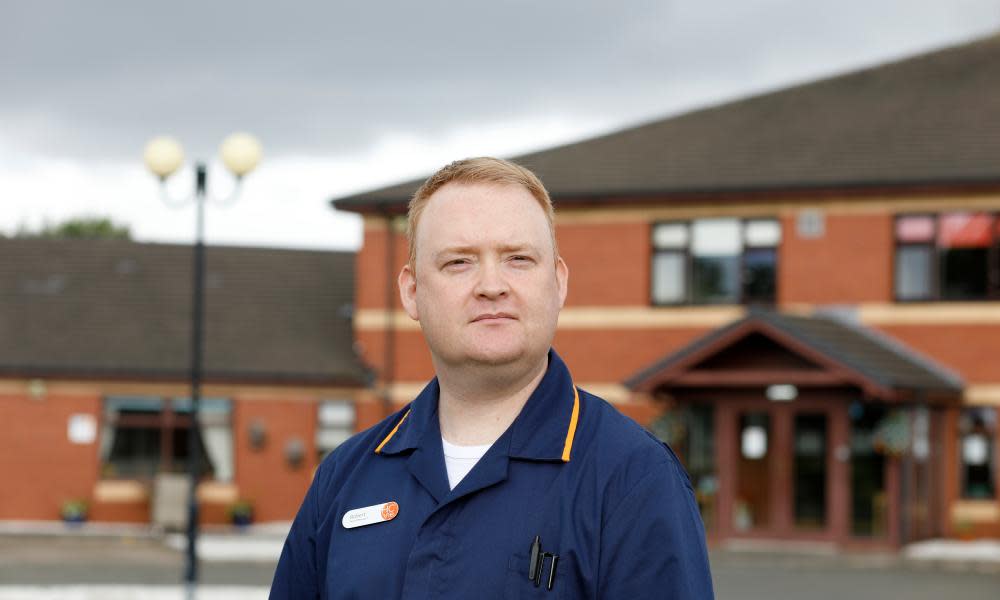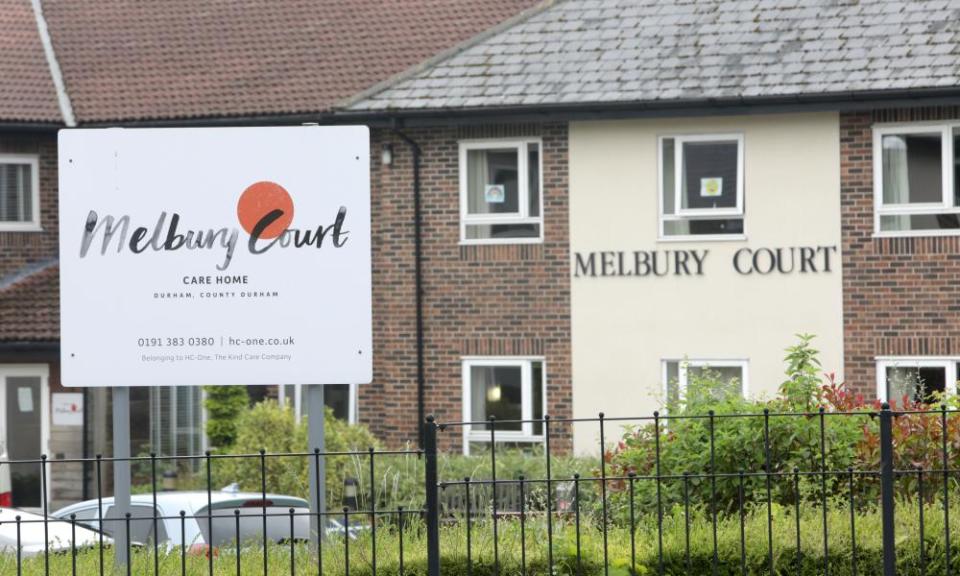'Fighting something invisible': how a UK care provider is curbing Covid-19

It was on 2 April that Robert Murray, a Glasgow care home manager, received bad news: the first coronavirus infection among his residents. Three weeks earlier, he had closed the doors of the 110-bed Greenfield Park facility to outsiders to try to keep the virus at bay. But in a large home served by large numbers of care and auxiliary staff in the city’s east end, that proved impossible.
Greenfield Park’s first Covid-19 death came three days later and, before the next fortnight was out, 10 residents had died from the virus.
“It was the darkest days,” Murray recalled. “You are fighting something that is invisible. At that point we didn’t realise a lot of people were asymptomatic so we didn’t know they had Covid. We were learning on a daily basis about how to manage it.”
Anyone with symptoms was kept in their own bedroom, staff started wearing masks, and they stripped out soft furnishings to allow enhanced cleaning. But still it spread, with up to 20 people showing symptoms in three of the home’s five units.
default
They didn’t feel in control. “It was difficult to tell if it was the same infection [in different areas] without testing,” said Liz Whyte, Covid-19 lead for HC-One, which operates Greenfield Park. “You could have had staff carrying the virus and not knowing.”
HC-One, the UK’s largest private provider of care homes, lost more than 1,000 residents to Covid-19 during the pandemic, with some of its biggest homes hardest hit.
In the chain’s Highgate care home, near Glasgow, 22 of its 74 residents died. The care home manager there, Jennifer McKellar, described the virus as a “silent assassin going around the home”. Twenty-six residents died at the 87-bed Melbury Court in Durham, where workers described the virus spreading between units on different floors “like a blur”.
It is possible that Greenfield’s death toll could have been as bad, had it not already been divided into five units, in effect the bubble system now being proposed to reduce infection in larger homes. Each unit was served by its own staff, including as far as possible cleaning and laundry workers, and at two of the units there were no fatalities.

Its layout and the staffing arrangements meant that residents with dementia who liked to wander, for example, were able only to move within their units, a potential model for other large homes.
“We worked very much on the footfall,” said Whyte. “Once it was known that the spread was likely to be coming from our staff, even before we could test them we knew we needed to reduce that very quickly and make sure we had dedicated teams working in dedicated areas. That happened in small and large homes.”
That kind of grouping of residents and staff was now being implemented across the company’s homes, she said.
Murray, meanwhile, said Greenfield Park had been through “a very difficult time”. He said the residents who had died “were very important to us, like they are to their family members, and we miss them … Everyone is worried about the potential [of a second wave of infection], but everything that we are doing is going to keep us safe. We definitely feel more in control.”

 Yahoo News
Yahoo News 
